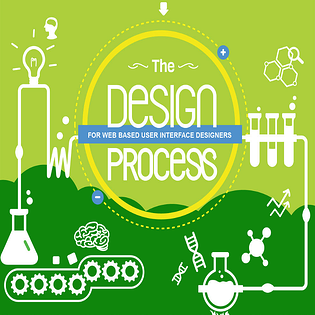Starting from scratch on a website can feel like an overwhelming task. Even making significant changes to an existing site can suck up a surprising amount of manhours. So if you’re going to invest that much time and energy into a web project how can you be sure you’re doing it right? We’ve got the answers outlined below.
The Web Design Process
1) Discover your audience
As with most Inbound Marketing approaches, knowing your audience remains the most important goal. You need to know and understand your target demographics before delving into any sort of development. Research your customers’ interests, online behaviors and overall purchasing tendencies. Create buyer personas -- if you haven’t done so already -- to focus the website’s purpose and functionality to those results.
2) Brainstorm every thought
The saying “two heads are better than one” definitely applies during this stage. Gather a group of people that represents different areas of expertise. Set aside a specific amount of time and begin brainstorming the goals and needs of the website. If you’re dealing with a niche subject matter, it may be best for you to come to the session with the fruits of your own personal brainstorming to give the group a solid understanding of the client at hand.
3) Get creative away from the computer
With your target audience in mind and a comprehensive list of the brainstorming results, it’s time to begin the visual creative process. Sketching, both on paper and with props, is a proven way to stimulate different parts of the brain and get unique thoughts to become tangible ideas. Whatever you do, do NOT try this on a computer. You’ll have plenty of time to stare at a screen as you make your way through this process.
4) Build a strong foundation
A solid information architecture is vital to the stability of a good website. Think of the sitemap as the foundation -- build it in a way that it can support multiple functions. Take the information you gathered and learned in the previous stages and organize it in a smooth, intuitive way. Remember, this does not have to be designed. That comes next.
5) Approve each layer uniquely
You’ll go through several layers of approval as you venture through from creative vision to fully functioning website. Start with wireframes to show the layout portion of design. You can then move to high-fidelity mockups to get the OK on the full visual design. You’ll undoubtedly make several revisions as you go through this process. When you feel comfortable with all the changes, create a full prototype of the polished layout and design.
6) Go through your iterations
As an Inbound Marketer, you never settle for what your internal team thinks works best -- you test. Open up your review process to a variety of internal and external users, including your client. Absorb as much feedback as you can get and work in the edits to produce a more efficient and effective website. It’s important to note that a website is never officially done. You can always make improvements and continue to innovate as the digital world evolves.
7) Develop responsive code
You’ve finally arrived at staring at the computer screen. It’s time to open your coding toolbox and go to work. Find the right balance between cool features and simple navigation/functionality. Remember that web users will give you a very limited amount of time and ease-of-use will top their list of wants -- along with mobile accessibility. Enable comments in the code to maximize two-way communication and utilize version controls to create a website that is flexible.
8) Test, test, test again
Another round of testing is vital to the end-result of your website. Gather a small group of around six people to do a thorough run-through of your design, navigation and content. Consider A/B testing to try different ideas and find the best approach to any remaining questions/ideas. Don’t negate the results of this testing. Give it a fair and unbiased analysis and work out as many kinks as you can before going live.
9) 3-2-1-LAUNCH!
You can officially get your website off the ground but don’t get too carried away and think you’re done. The web world is constantly changing and that means your website will need to, as well. Stay active with the A/B testing and listen to what your users have to say. Launching a good website will go a long way, but constant updates and improvements is what will keep your website above the rest.
Jason Thomas has been helping launch and develop start ups for 10 years. Jason's passion is working with motivated entrepreneurs to validate and implement ideas that grow their business.
Jason is a husband, father, and homesteader in training. In his spare time he's generally outside working with his hands and getting dirty.




